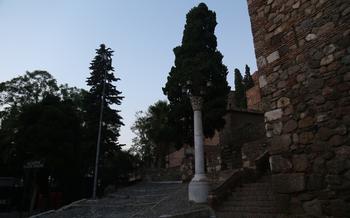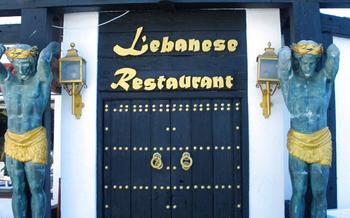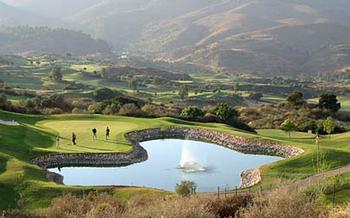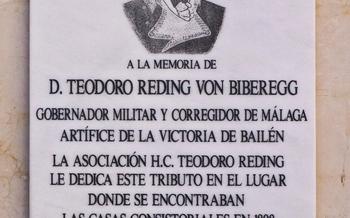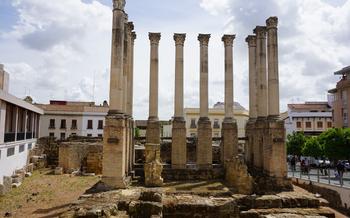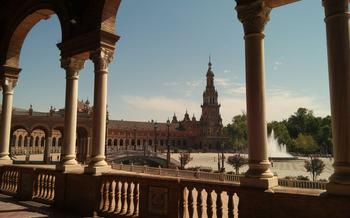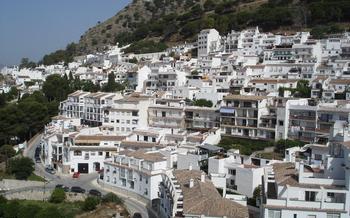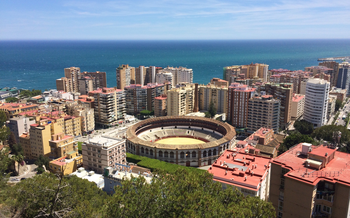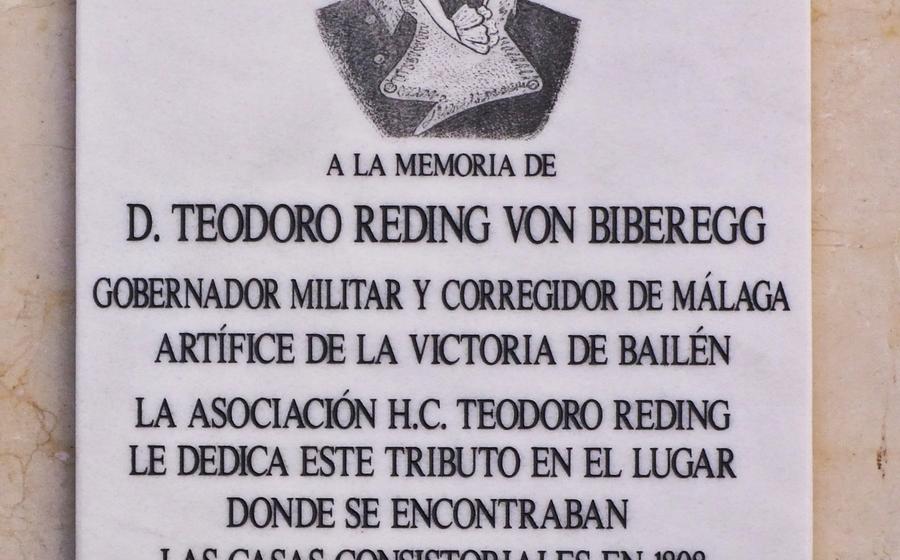
Guadalmina Roman Baths (Marbella)
- The Guadalmina Roman Baths (Marbella): A Hidden Gem of Antiquity
- Location and Accessibility
- Admission and Hours of Operation
- Step Back in Time: Uncovering the History of the Baths
- Exploring the Ruins: A Journey Through Ancient Architecture
- The Baths' Significance: A Reflection of Roman Civilization
- Preservation and Restoration: Protecting a Legacy
- Immerse Yourself in Roman Life: A Multi-Sensory Experience
- Beyond the Baths: Exploring the Surrounding Area
- Tips for Visitors: Making the Most of Your Visit
- Capture the Moment: Photography Opportunities
- Unforgettable Souvenirs: A Lasting Memory of Your Visit
- Educational Opportunities for All Ages
- Special Events and Exhibitions
- Insider Tip: Unveiling a Hidden Treasure
The Guadalmina Roman Baths (Marbella): A Hidden Gem of Antiquity
Nestled in the heart of the Costa del Sol, between the vibrant city of Marbella and the picturesque town of San Pedro de Alcántara, lies a hidden gem that transports visitors back to the days of the Roman Empire: the Guadalmina Roman Baths. These remarkably preserved ruins offer a glimpse into the opulent bathing culture of the ancient Romans and stand as a testament to their unrivaled engineering prowess.
History of the Baths
The Guadalmina Roman Baths were constructed in the 2nd century AD, during the reign of Emperor Hadrian, and remained in use until the 5th century. Built on the site of a natural spring, the baths formed part of a larger villa complex and served as a place for the wealthy and influential citizens of Roman society to relax, socialize, and rejuvenate.
Architectural Features
The baths, spread over an impressive 2,000 square meters, comprised various sections, including separate bathing areas for men and women, a frigidarium (cold bath), a tepidarium (warm bath), and a caldarium (hot bath). Sophisticated heating systems, hypocausts, ensured a constant supply of hot water, while intricate mosaics and frescoes adorned the walls and floors, showcasing the artistic talents of the Roman artisans.
Importance of the Baths to Roman Society
In Roman culture, bathing held both a hygienic and a social significance. The baths were not just places for cleansing the body but also served as venues for socializing, networking, and engaging in philosophical discussions. The wealthy and powerful would often frequent the baths to unwind, conduct business, and strengthen social bonds.
Current State of the Baths
The Guadalmina Roman Baths remained buried for centuries until their rediscovery in the 1950s. Since then, extensive archaeological excavations have uncovered the remarkably well-preserved remains of the complex. Today, visitors can explore the ruins, wander through the various chambers, and admire the intricate mosaics, providing a glimpse into the daily lives and bathing rituals of the ancient Romans.
Location and Accessibility
The Guadalmina Roman Baths are located in the San Pedro de Alcántara district of Marbella, in southern Spain. The exact address is Calle del Guadalmina, 29670. To get to the baths, you can take a bus from Marbella bus station to San Pedro de Alcántara and then walk for about 10 minutes. Alternatively, you can take a taxi or drive your own car. There is ample free parking available near the baths.
The nearest landmarks to the Guadalmina Roman Baths include the Guadalmina River, the Guadalmina Beach, and the San Pedro de Alcántara Castle. The baths are also within walking distance of several restaurants, bars, and shops.
Admission and Hours of Operation
- Ticket Prices:
- General admission: €5
- Concession rates (students, seniors, children under 12): €3
-
Family ticket (2 adults + 2 children): €15
-
Guided Tour Availability:
- Guided tours are available in English and Spanish at an additional cost of €2 per person.
- Tours depart every hour from the visitor center.
-
Advance booking is recommended to secure a spot.
-
Best Time to Visit:
- The best time to visit the Guadalmina Roman Baths is during the off-season (October to April) to avoid crowds and enjoy a more intimate experience.
-
The baths are open from 9 am to 6 pm daily, except on December 25th and January 1st.
-
Closure Days:
- The baths are closed on Mondays and national holidays.
Step Back in Time: Uncovering the History of the Baths
The Guadalmina Roman Baths stand as remnants of a bygone era, whispering tales of ancient Roman life and customs. Their origins can be traced back to the 1st century AD, when the Romans established a settlement in the region. The baths served as an integral part of Roman society, functioning as a place for bathing, socializing, and relaxation.
The baths' primary purpose was to provide a hygienic environment for the Romans to cleanse themselves. Bathing played a crucial role in Roman culture, as it was believed to promote both physical and spiritual well-being. The baths were also a place for social interaction, where individuals from all walks of life could gather and converse.
Roman bathing rituals were elaborate and involved a series of steps. Bathers would first enter the frigidarium, a cold plunge pool, to cool down their bodies. They would then move to the tepidarium, a warm room used for acclimatization. Finally, they would enter the caldarium, a hot room, where they would bathe in hot water and sweat out impurities.
Over the centuries, the baths underwent several modifications and renovations. Archaeological excavations have uncovered various artifacts and structures that provide insights into the daily lives of the Romans who frequented the baths. These discoveries include coins, jewelry, pottery, and even lead pipes used for plumbing.
Exploring the Ruins: A Journey Through Ancient Architecture
The Guadalmina Roman Baths offer a fascinating glimpse into ancient Roman architecture and engineering. The layout of the baths is typical of Roman public baths, with separate sections for men and women, as well as a variety of rooms serving different functions.
The most impressive feature of the baths is the intricate mosaics that decorate the floors and walls. These mosaics depict a variety of scenes, including mythological figures, animals, and geometric patterns. The baths also feature a number of well-preserved frescoes, which provide further insight into Roman art and culture.
In addition to the mosaics and frescoes, the baths are home to a number of other interesting architectural features. These include a large pool, which was used for swimming and bathing, as well as a number of smaller pools, which were used for different purposes, such as hot and cold baths. The baths also feature a number of vaulted ceilings, which are supported by massive columns.
The Guadalmina Roman Baths are a testament to the skill and ingenuity of the Roman people. These baths are a valuable reminder of the rich history and culture of the Roman Empire, and they offer visitors a unique opportunity to step back in time and experience the grandeur of ancient Rome.
The Baths' Significance: A Reflection of Roman Civilization
The Guadalmina Roman Baths stand as a testament to the profound importance of bathing in Roman culture. For the Romans, bathing was not merely a hygienic practice but a deeply ingrained social and cultural ritual. The baths served as communal spaces where people from all walks of life could socialize, relax, and rejuvenate. They were also closely associated with health and well-being, as the Romans believed that bathing had therapeutic and medicinal properties.
Beyond their social and hygienic significance, the baths were also a symbol of Roman engineering prowess and ingenuity. The complex and intricate design of the baths, with their sophisticated heating systems, water distribution networks, and impressive architectural features, showcased the advanced engineering skills of the Romans. The baths also played a crucial role in urban planning and infrastructure development, contributing to the overall prosperity and well-being of Roman cities.
When compared to other Roman baths, the Guadalmina Roman Baths offer a unique perspective on bathing culture in the Roman Empire. While many other baths have been extensively excavated and restored, the Guadalmina baths remain largely untouched, providing visitors with a glimpse into their original state. This authenticity, combined with the baths' well-preserved condition, makes them a valuable site for studying Roman bathing practices and architecture.
Preservation and Restoration: Protecting a Legacy
The Guadalmina Roman Baths, as a testament to ancient Roman engineering and artistry, have undergone meticulous preservation and restoration efforts to ensure their enduring legacy. Recognizing the immense historical and cultural significance of the site, various organizations, including the local government, conservation experts, and archaeologists, have collaborated to protect and restore the baths to their former glory.
The primary challenge faced in the conservation process lies in the delicate nature of the ruins. Over time, the baths have been subjected to natural wear and tear, weathering, and occasional vandalism. The restoration team carefully assesses each element of the site, employing specialized techniques to stabilize and repair crumbling structures, reinforce weakened foundations, and protect delicate mosaics and frescoes from further deterioration.
The preservation efforts extend beyond physical restoration. Archaeological excavations have played a crucial role in uncovering additional sections of the baths and shedding light on their original layout and function. Artifacts discovered during these excavations, such as pottery, coins, and jewelry, provide valuable insights into the daily lives of the Romans who frequented these baths.
By preserving and restoring the Guadalmina Roman Baths, we not only safeguard a remarkable piece of history but also ensure that future generations can appreciate and learn from this ancient site. The baths stand as a living testament to the ingenuity and sophistication of Roman civilization, reminding us of the enduring power of our shared cultural heritage.
Immerse Yourself in Roman Life: A Multi-Sensory Experience
Enhancing the exploration of the Guadalmina Roman Baths is a range of interactive experiences that transport visitors back in time. Through virtual reality simulations, visitors can immerse themselves in the daily life of ancient Romans, experiencing the baths' bustling atmosphere and witnessing bathing rituals firsthand. Educational programs and workshops delve deeper into Roman history and culture, offering hands-on activities that bring the past to life. Additionally, thematic events and reenactments recreate the social and cultural significance of the baths, providing a glimpse into the vibrant world of Roman society.
Beyond the Baths: Exploring the Surrounding Area
Beyond the fascinating ruins of the Guadalmina Roman Baths, a wealth of attractions awaits visitors eager to delve deeper into the region's rich history and vibrant culture. A short stroll from the baths, the quaint village of San Pedro Alcántara offers a charming glimpse into traditional Spanish life, with its whitewashed houses, narrow cobblestone streets, and lively plazas. The village is home to several historical landmarks, including the 16th-century Iglesia de San Pedro Alcántara, a beautiful example of Andalusian religious architecture.
For those seeking natural wonders, the stunning beaches of the Costa del Sol are just a stone's throw away. The nearby Playa del Guadalmina, with its golden sands and crystal-clear waters, is an ideal spot to relax and soak up the Mediterranean sun. Nature enthusiasts can explore the picturesque Río Guadalmina, which meanders through the surrounding countryside, offering opportunities for tranquil walks and birdwatching.
The region is also renowned for its culinary delights. Visitors can indulge in traditional Spanish cuisine at the many restaurants and tapas bars in San Pedro Alcántara, savoring fresh seafood, flavorful paella, and the region's famous gazpacho. Local markets, such as the Mercado Municipal de San Pedro Alcántara, offer a vibrant array of fresh produce, spices, and local delicacies, allowing visitors to immerse themselves in the region's gastronomic culture.
Tips for Visitors: Making the Most of Your Visit
To fully appreciate the Guadalmina Roman Baths, plan to spend at least an hour exploring the site. Wear comfortable footwear as you'll be doing a fair amount of walking on uneven surfaces. Dress appropriately for the weather, as there is limited shade within the ruins. Photography is allowed, but using a flash is prohibited. The site is wheelchair accessible, ensuring that everyone can enjoy this historical gem.
Capture the Moment: Photography Opportunities
The Guadalmina Roman Baths offer a wealth of photographic opportunities for enthusiasts of all levels. With its ancient ruins, intricate mosaics, and lush surroundings, the site provides a picturesque backdrop for capturing stunning images.
Ideal spots for capturing stunning photographs: - The entrance: The arched entrance to the baths, with its worn stone and rustic charm, makes for a captivating shot. - The pools: The various pools and basins, with their shimmering water and reflections, offer unique perspectives for capturing the essence of the baths. - The mosaics: The well-preserved mosaics, depicting scenes from mythology and everyday life, provide a vibrant and colorful subject for photography. - The columns and arches: The elegant columns and arches that support the structures create striking compositions and add depth to your shots. - The surrounding landscape: The lush vegetation and the backdrop of the mountains provide a beautiful contrast to the ancient ruins, creating a harmonious and picturesque scene.
Tips for taking memorable shots: - Use natural lighting: The warm, golden light of the morning or late afternoon hours can enhance the colors and textures of the ruins, resulting in more vibrant and dramatic photographs. - Avoid crowds: If possible, visit the baths during off-peak hours or on weekdays to avoid crowds and capture the site's tranquility and solitude. - Experiment with different angles: Don't just shoot from eye level; try different angles and perspectives to create more dynamic and interesting compositions. - Pay attention to the details: The baths are filled with intricate details, from the carvings on the columns to the patterns in the mosaics. Take the time to focus on these details to add depth and interest to your photographs.
Unforgettable Souvenirs: A Lasting Memory of Your Visit
The Guadalmina Roman Baths offer a unique opportunity to take home a piece of history and culture. On-site, you'll find a well-stocked gift shop brimming with a variety of souvenirs and memorabilia that will serve as lasting reminders of your visit. From replicas of ancient Roman coins and pottery to books and postcards featuring stunning images of the baths, you'll be spoilt for choice.
The gift shop also showcases a selection of locally crafted items, providing an excellent opportunity to support local artisans and businesses. These unique souvenirs, handmade with care and attention to detail, range from intricate ceramics and jewelry to traditional Spanish crafts. Whether you're looking for a small token or a special gift for a loved one, you're sure to find something truly memorable at the Guadalmina Roman Baths.
Educational Opportunities for All Ages
The Guadalmina Roman Baths offer a range of educational programs and resources that cater to visitors of all ages. Guided tours led by knowledgeable experts provide an in-depth exploration of the site's history, architecture, and significance. Educational materials, including brochures, maps, and interactive displays, enhance the learning experience for both adults and children.
Workshops and hands-on activities are designed to engage younger visitors and help them understand Roman culture and customs in a fun and interactive way. These activities may include mosaic-making, pottery painting, or dressing up in traditional Roman attire. The baths also offer educational programs for schools and groups, providing an opportunity for students to learn about ancient Roman history and archaeology firsthand.
By participating in these educational programs, visitors can gain a deeper understanding of the Guadalmina Roman Baths and the fascinating world of ancient Rome. These experiences not only enrich the visit but also foster a greater appreciation for the cultural heritage and historical significance of this remarkable site.
Special Events and Exhibitions
The Guadalmina Roman Baths often host temporary exhibitions and art installations that enhance the visitor experience. These exhibitions showcase artifacts, historical documents, and artwork related to the baths, Roman culture, and the local region. They provide a deeper understanding of the site's significance and offer a fresh perspective on its history.
In addition, the baths occasionally host cultural events and festivals that bring the past to life. These events may include historical reenactments, performances, and demonstrations that immerse visitors in the atmosphere of Roman times. They offer a unique opportunity to experience Roman customs, traditions, and daily life firsthand.
To make the most of your visit, be sure to check the official website or contact the baths directly for information on upcoming events and exhibitions. These special events add an extra layer of excitement and engagement to your visit, allowing you to explore the Guadalmina Roman Baths in a truly immersive and memorable way.
Insider Tip: Unveiling a Hidden Treasure
Beyond the main attractions of the Guadalmina Roman Baths, there are hidden gems waiting to be discovered by curious explorers. Off the beaten path, you'll find secluded corners, intricate details, and unique perspectives that offer a deeper connection to the past. Seek out the lesser-known features of the baths, such as the secluded nooks where bathers once relaxed and rejuvenated. Capture the essence of the site by exploring the nearby river and its picturesque surroundings, where nature and history intertwine. Combine your visit to the baths with other nearby attractions like the vibrant city of Marbella or the charming white villages nestled in the surrounding mountains. Embrace the opportunity to create a truly memorable and enriching experience that goes beyond the surface.
